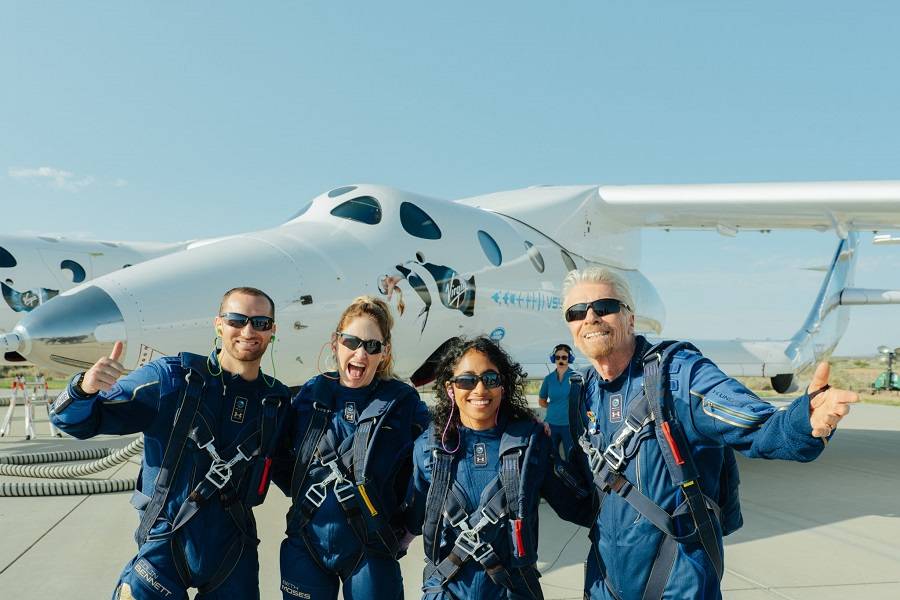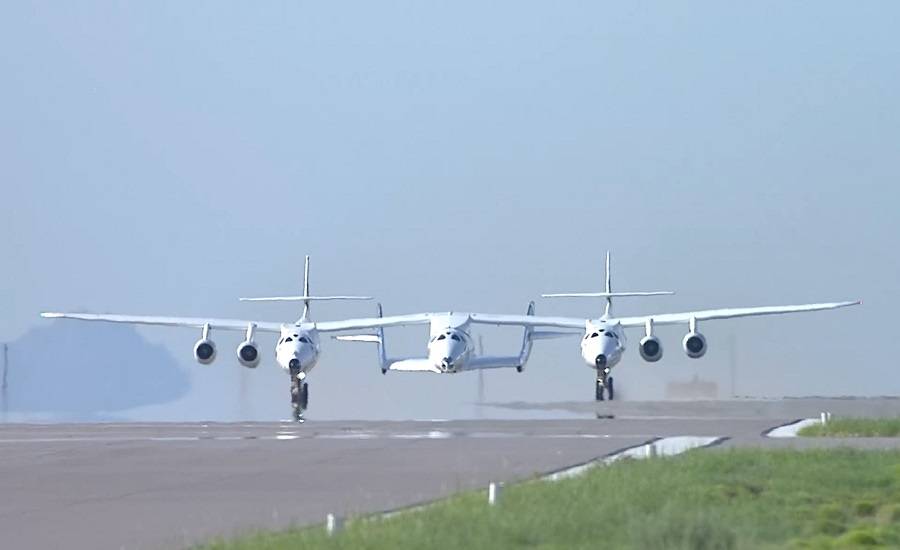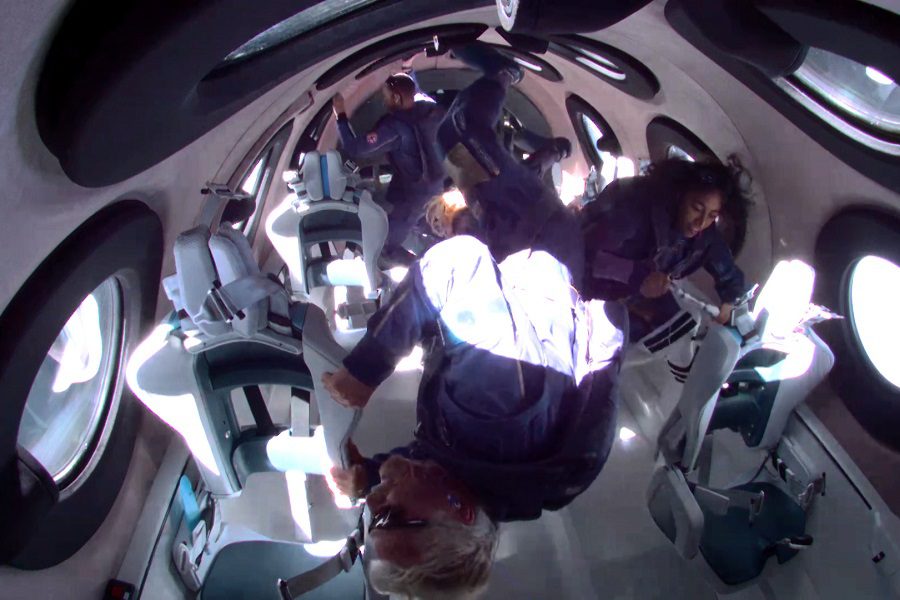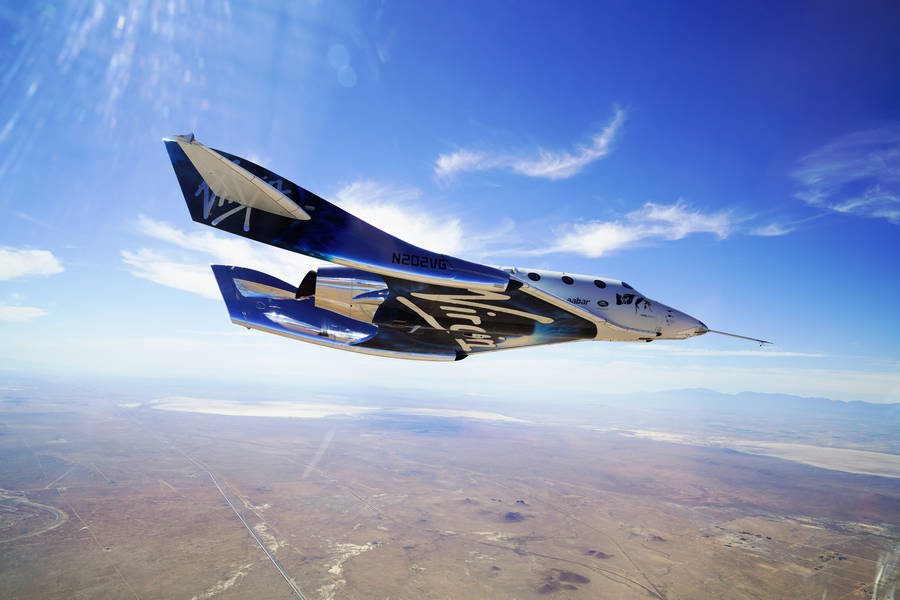After decades of preparation, Virgin Galactic flew its rocket plane to space, with all seats full – and Richard Branson in one of them. And then announced a way we could all take part, on a future flight!
The sleepy New Mexico town of Truth or Consequences hasn’t had an easy time lately. People there make their living on local hot springs, healing waters and the Elephant Butte reservoir. But the current drought is poised to make this a difficult year. However, this is the closest town to Spaceport America. And space tourism, courtesy of Virgin Galactic and Richard Branson, is already altering their fortunes.

Likewise, Spaceport America is fast getting on the map. The airport doesn’t have an ICAO or IATA code (FAA location identifier: 9NM9). However, it does have a brand-new terminal and hangar facility, and a 3.66km/12,000ft runway. The State of New Mexico built the site specifically to attract aspiring commercial space activity, like Richard Branson’s Virgin Galactic.
Other companies have plans for the site, too. But Virgin Galactic occupy a lot of the used space at the moment. And it was their space flight on the 22nd of May, that made Spaceport America and New Mexico the first US sites to put humans in space, outside Florida and California. However, that flight only had three crew. Today’s flight brought that number up to six.

It was ‘Unity 22’, the 22nd flight test for the Unity space craft. Obviously, most of these flights did not reach space. Virgin Galactic has now reached space four times. Originally, Richard Branson and the rest of the VSS Unity crew, would begin their foray into space at 13:00 GMT. Weather caused a 1:30-hour delay.
The Mission
As always, VSS Unity and VMS Eve, the mothership, took off together. When the mothership’s two pilots, CJ Sturckow and Kelly Latimer reached a bit over 46,000 feet, they dropped VSS Unity. Its pilots, Dave Mackay and Michael Masucci took over and fired Unity’s rocket engine, powering it to an altitude of 282,000ft/53.4 miles. As promised, Richard Branson and the rest of the passengers reached past the 50-mile boundary, defining ‘official’ space. The entire flight lasted a bit over 90 minutes.

Officially, the role that Richard Branson had in this space mission, was to evaluate “the astronaut customer experience”. It is also an early present to himself, as he celebrates his 71st birthday in a week’s time. Upon landing, he said:
“I have dreamt about this moment since I was a child, but nothing could have prepared me for the view of Earth from space. We are at the vanguard of a new space age. As Virgin’s founder, I was honoured to test the incredible customer experience as part of this remarkable crew of mission specialists and now astronauts. I can’t wait to share this experience with aspiring astronauts around the world.”
Big day ahead. Great to start the morning with a friend. Feeling good, feeling excited, feeling ready.
Watch #Unity22 launch and livestream TODAY at 7:30 am PT | 10:30 am ET | 3:30 pm BST.@virgingalactic @elonmusk https://t.co/1313b4RAKI pic.twitter.com/FRQqrQEbH8
— Richard Branson (@richardbranson) July 11, 2021
The special day (today, July 11th) started off rather oddly, for some. Before reaching Spaceport America and preparing for his space flight, Richard Branson posted a picture of himself with Elon Musk. He explained that the two of them started the day together. This slightly spoils the “billionaires’ space race” spin that some are trying to put into this story. Branson, Amazon’s Bezos and Musk are supposedly the three pretenders in this race.
Virgin Galactic and Richard Branson Reaching Space
For what it’s worth, Branson won that “space race” today. Jeff Bezos is next, scheduled to fly in Blue Origin’s New Glenn on the 20th of July. Elon Musk will have to wait for a few months longer. But in a way, he’s not really in the same race. While Richard Branson and Jeff Bezos are doing suborbital space flights, Elon Musk’s SpaceX is flying in orbit. Musk was present today in Spaceport America, too.

The flight is seventeen years in the making. It started with the Ansari X-prize, an initiative to create a vehicle that would make two consecutive flights to space, within 2 weeks. Paul Allen’s Tier One project and the SpaceShipOne and WhiteNightOne vehicles made it happen in 2004. VSS Unity and VMS Eve are SpaceShipTwo and WhiteNightTwo vehicles respectively, as Virgin Galactic continued the project.
Richard Branson and the Virgin Galactic project faced many challenges in reaching space. These included a fatal accident in 2014, when the SpaceShipTwo reconfigured for reentry prematurely. A lot of work and a pandemic later, the dream became a reality. Virgin Galactic will conduct two more test flights in 2021.

Then paying customers will get a chance to fly in the same spacecraft, in 2022. But Richard Branson also announced that the company will also fly lucky members of the public to space, for free! Well, almost: they will have to make a donation to Charities Aid Foundation America, for a chance to win. Also, future missions will carry scientists and their science experiments. This is a partial answer to critics, who question the value of Virgin Galactic’s and Blue Origin’s space flights.




3 comments
Robert Murray
For free? Did somebody ask if I would fly for free? Yup. I would ride on the back of Simon Cowell’s bike if it was for free. But I’d rather ride the Zero-G plane (cheaper and more hang time), or the Space-X Inspiration 4 flight (a real multiday orbital flight), or Space Perspective balloon ride (best view and a real toilet, but at 1 G).
Ernst Schütz
It’s important to note that Richard Branson and his fellow passengers did NOT reach space. They reached an apogee of 282000 ft above sea level in their parabolic trajectory. This is 85.9536 km above sea level. According to today’s international definition space begins above 100 km, that at the Karman-Line. There was an old definition in the USA in the 1950s and the early 1960s that the space is any altitude abobe 50 statue miles ( = 80.45 km) but this is NOT today’s internationally defined altitude where space starts. So it is clear that Richard Branson missed the mark by more than 14 km or by about 64568 ft.
Spyros
That point is probably worth an article. In any case, I believe Jeff Bezos’ Blue Origin is also aiming for the same 50 statute-mile ‘space limit’…